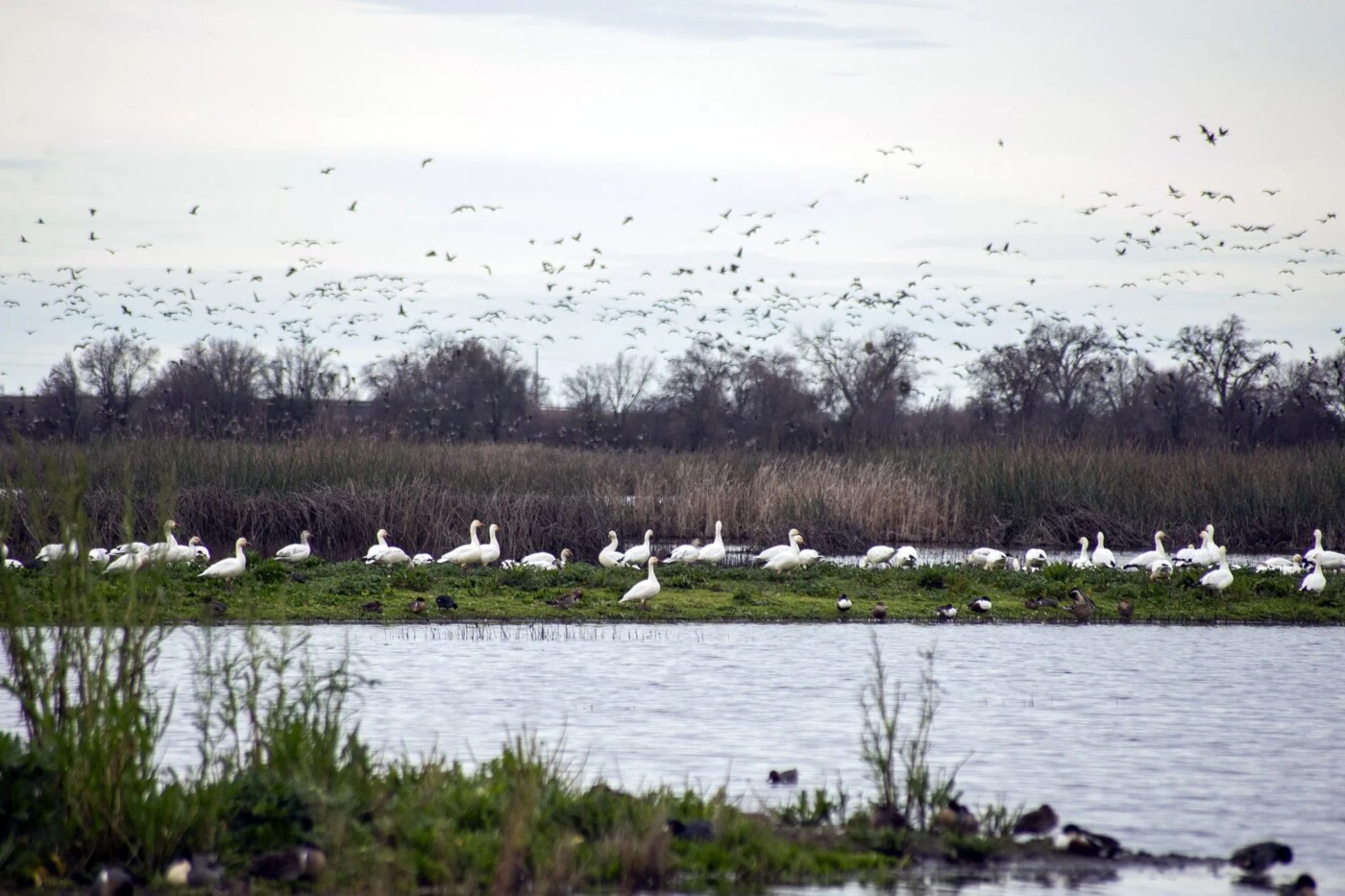Last summer, shovels began turning on a future landscape interpretation center at the edge of the Suisun Marsh, one of the four North American flyways and a stopping point for millions of birds on their 10,000-mile migratory path from Alaska to Patagonia.
Three miles of publicly accessible trails will weave through 15 newly constructed wetland ponds that will serve as habitat for the resting, nesting and feeding of migratory or native birds.
“We are inviting the birds to land,” said Veronica Cornett, project manager for the future Pacific Flyway Center. “That is the first and most important part of the project.”
The Pacific Flyway Center site is located about 6 miles south of the city of Fairfield. The 124-acre center will nest within an 845-acre site located between Interstate 680 and the Cordelia Slough. Most of the land is easement within the Suisun Marsh, a 116,000-acre nature preserve east of San Francisco Bay in Solano County that represents a little more than 10% of the remaining wetlands in California. Cornet estimates that each year, nearly a billion birds of 250 different species pass through the marsh.

The marsh walk is phase one, due to open in 2027. Phase two will be a 28,000-square-foot building, an all-in-one event space and education center. Visitors will be able to learn about the flyway and wetland ecosystems. Ducks Unlimited has supported the project with expertise on the habits and lifecycle of birds. The hunter’s association has conserved 16 million acres of waterfowl habitat in North America, according to Forbes magazine.
“We are going to be open to the public as soon as we are finished with the marsh walk. We will be encouraging having school age children on K-12 field trips and working with colleges and universities that have interest in research and outdoor education,” said Cornett.
Part of the land is being used by the nonprofit group International Bird Rescue, which started cleaning pelicans and sea birds in 1971 after 800,000 gallons of crude oil spilled into the San Francisco Bay. The organization now responds to oil spills and environmental disasters on six continents.
“The Bay Area serves as that resting, nesting and feeding area because Northern California is very dense in agriculture,” Cornett said.
They stop in rice and barley fields.
“The birds are there by the thousands, so you have common Swans, Tundra Swans, you have every duck imaginable. If you sneak out there before daylight breaks and you’re under the cover of darkness and the sun comes up, you see all these white dots against the sky,” she said.
Millions needed to achieve vision
The project was seeded with a $5 million donation from the late philanthropist, real estate developer and duck hunter Ken Hoffman. The Delta Conservancy granted the project $1.9 million. That paid for the marsh walk.
“We have another grant that we’ve submitted to another state organization for $700,000 for plants and irrigation. To complete everything that we originally proposed, it would be well over $100 million,” she said.
The final vision is to have a destination spot for bringing busloads of school kids into the pulse point of an important bioregion, a perspective that is often reserved for the privileged.
“Our mission is to create access for all, in particular for the underserved and greatly underserved, so that a natural world environment can be experienced up close and personal,” said Cornett, who added it is to help people understand how cool it is to be outside. “There’s a lot of opportunities for young people, not your typical type of jobs. You can be a biologist. You can work in outdoor education.”
Cornett worked in outdoor youth education in Fairfield, and she laments the fact that it is difficult to get grants to bring kids from underserved communities into nature preserves.
“Some of these kids had never been in an environment like that. There’s a gap there,” she said. “There’s a gap in creating space for students to really experience something outside of the classroom.”
The post Pacific Flyway Center takes wing: Nature site aims to bring public closer to migratory birds appeared first on Local News Matters.
